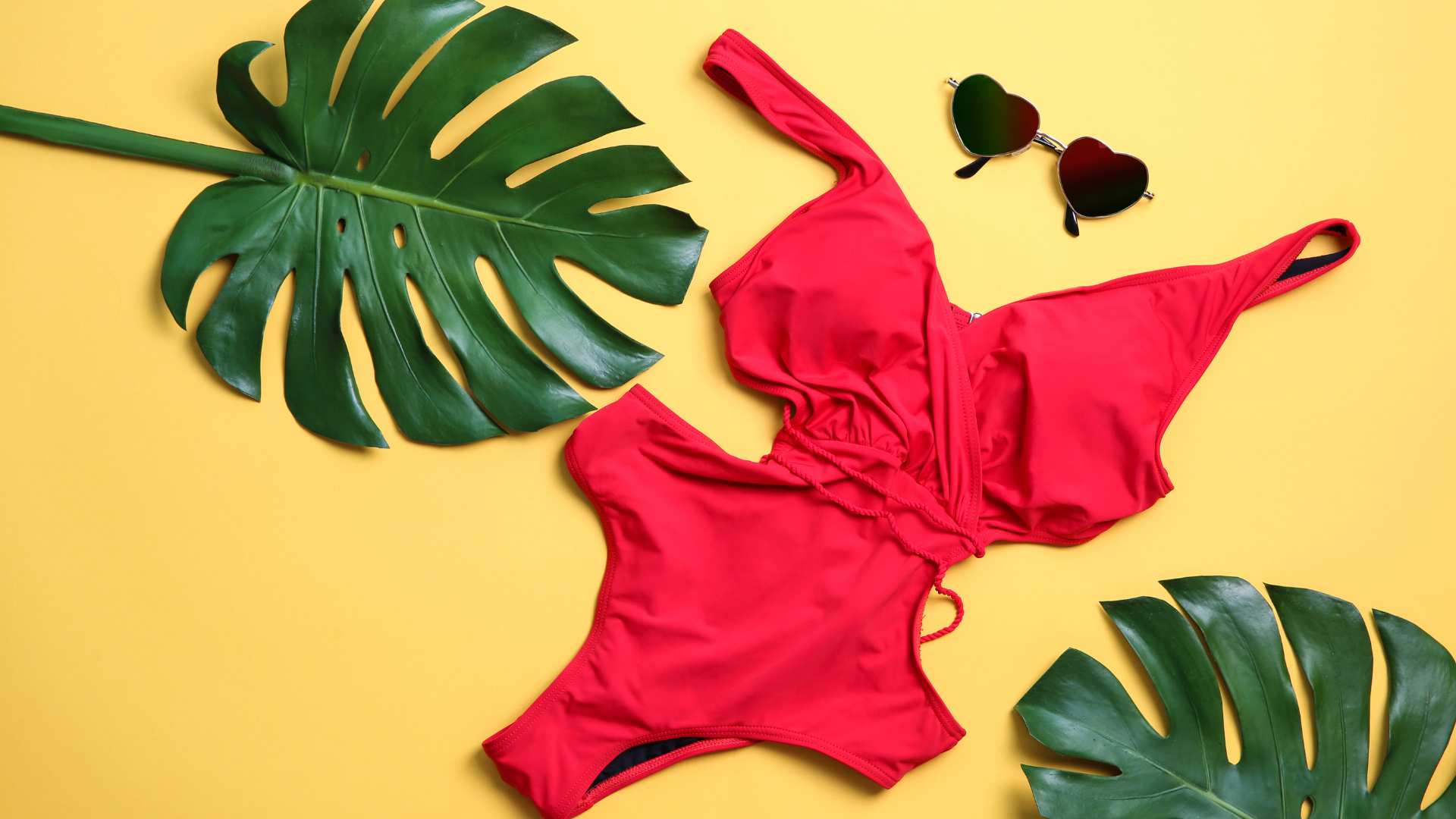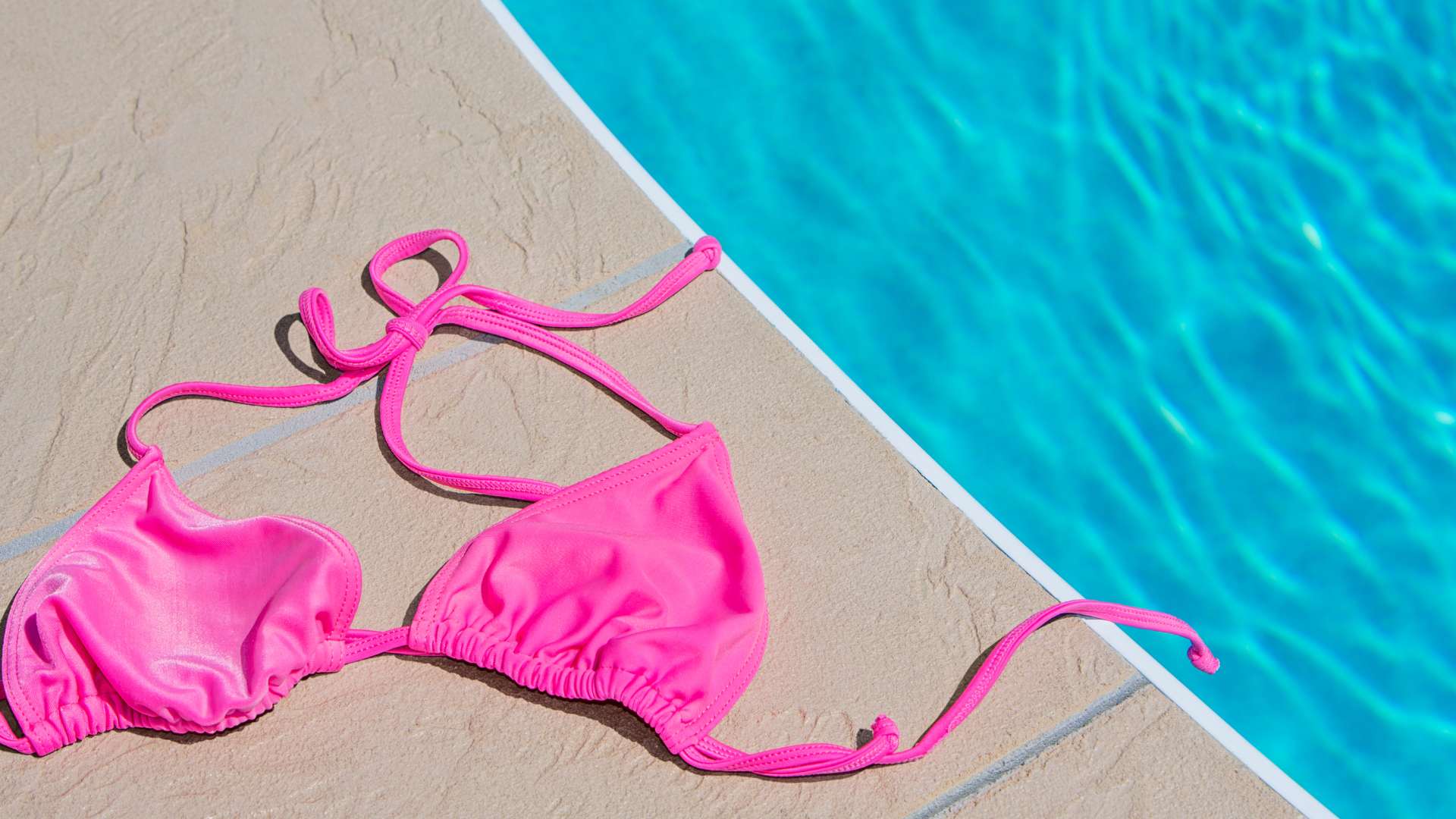
How to stretch out one-piece swimsuits
A tight one-piece swimsuit can ruin your beach day. Discomfort keeps you adjusting your swimsuit and feeling self-conscious. Nobody wants that. Fortunately, you can stretch your swimwear for a better fit.
Read on to learn how to stretch out your one-piece swimsuit for a perfect, comfortable fit.
Quick links:
Common problems with one-piece swimsuits
Check out our amazing one-piece swimsuit collection, to find the right piece. All our sun-protective swimwear is made of high-quality and durable UV-protective fabric with UPF 50+ for ultimate comfort and sun protection.
Common problems with one-piece swimsuits
One-piece swimsuits often feel too tight, especially after repeated use. The fabric shrinks or loses elasticity, becoming uncomfortable to wear. Straps might dig into your shoulders, and the suit may restrict your movement. These issues can turn a fun day at the pool into a frustrating experience.
Besides the tightness, the swimsuit might expose areas you'd rather keep covered or wrinkle and fold in unflattering ways, leaving you self-conscious. The tight-fitting swimsuit might also not complement your body shape, drawing attention to features you'd prefer to downplay.
Water and weights method
Start by soaking your swimsuit in cool water for about 15 minutes. After soaking, place the swimsuit on a flat surface.
Use weights, such as cans or heavy books, to stretch the fabric by placing them on the areas that feel tight.
Let the swimsuit dry completely under the weights to relax the fabrics and regain your suit’s original shape.
Hot water method
Fill a basin with hot water; make sure it’s not boiling. Submerge your swimsuit in the hot water for 10–15 minutes. After soaking, gently stretch the areas that feel too tight while the fabric is still warm.
This method is perfect for durable, quick-drying fabrics as it helps them regain flexibility and adapt to your body shape.
Hand method
You can also try to gently pull the swimsuit with your hands. Begin by dampening the swimsuit with cold water. Then, hold the swimsuit at the edges where it feels snug, and gently stretch the fabric outward, being careful not to overstretch delicate material.
Repeat this process until the swimsuit feels more comfortable.
Body method
Carefully put on the swimsuit and wear it for a period of time, moving and bending naturally. The warmth of your body and your movement will soften and mold the fabric to better match your shape.
This method is particularly effective for loosening the neckline or leg openings.
Swimsuit stretching techniques with heat
If manual stretching doesn’t work, it’s time to bring the heat. There are three ways to use heat on your swimsuit:
- Steamer method
- Hair dryer method
- Boiling water method
Steamer method
A garment steamer is an effective tool for relaxing and loosening swimsuit fibers. Here is how to use a steamer to stretch out your swimsuit:
- Hang your swimsuit on a sturdy hanger.
- Turn on the garment steamer and wait until it produces steady steam.
- Hold the nozzle a few inches away from the swimsuit fabric.
- Slowly move the steamer above the entire surface of the swimsuit.
- Once the fabric is warm and pliable, use your hands to carefully stretch and reshape the suit.
- Let your swimsuit cool entirely before wearing it.
Hair dryer method
The hair dryer method applies focused heat to specific areas of your swimsuit, to conform better to your body shape. Here is how to do it:
- Place your swimsuit on a flat surface.
- Set your hair dryer heat to the highest setting.
- Hold the dryer a few inches away from the swimsuit fabric.
- Concentrate the airflow on the areas that need more stretch.
- As the fabric warms, gently pull it to stretch.
Boiling water method
Submerging the one-piece in boiling water softens the fibers, so you can reform the swimsuit to your desired fit. You need to be more cautious with this method but it is a very good way to stretch out your one piece.
Follow these steps to get the best out of the boiling water method:
- Boil a pot of water, then turn off the stove.
- Submerge your swimsuit in the hot water for 2–3 minutes.
- Use tongs to remove the swimsuit from the water.
- While the fabric is still warm, stretch the areas that need more room.
- Lay the swimsuit flat to cool down and retain its new shape.
Stretch your one-piece with fabric conditioner
Fabric conditioner revives the elasticity and suppleness of fabric fibers so that you can stretch it out.
Here is how to do it:
- Fill a sink or basin with cool water and add a small amount of mild fabric conditioner.
- Submerge the swimsuit in the conditioner solution and soak it for 15–20 minutes.
- Gently squeeze and knead the fabric to help the conditioner penetrate.
- Rinse the swimsuit thoroughly in cool, clean water to remove any remaining conditioner.
- Carefully blot the swimsuit with a towel to absorb excess moisture.
- Put on the swimsuit and wear it until fully dry to help set the new, more relaxed shape.
This fabric conditioner treatment can be useful for swimsuits that have lost their original stretch and elasticity.
How to stretch out different fabric types
Different swimsuit fabrics require specific alteration techniques because of their unique compositions and properties. Here's how to approach stretching out some common swimsuit fabric types:
- Nylon and spandex blends
- Polyester blends
- Textured fabrics
- Lined swimsuits
- Natural fibers
- Metallic or sequined fabrics
- Chlorine-resistant fabrics
Nylon and spandex blends
Nylon and spandex blends are the most common swimsuit fabrics. To stretch these, soak the swimsuit in warm water, then gently pull the fabric by hand. Avoid excessive heat, as it can damage the swimsuit elastic.
Polyester blends
Polyester blends are durable and less prone to stretching. For these fabrics, use a combination of warm water soaking and manual stretching. If needed, apply a fabric stretching spray to help relax the fibers.
Textured fabrics
Textured fabrics, such as ribbed or ruched materials, require careful handling. Soak the swimsuit in cool water and stretch it gently by hand. Focus on the textured areas to avoid distorting the pattern.
Lined swimsuits
Lined swimsuits offer extra support but can be more challenging to stretch. Use the boiling water method to relax both the outer fabric and the lining simultaneously for an even stretch.
Natural fibers
Natural fibers, such as cotton or bamboo, are less common in swimwear. Stretch a bamboo or cotton swimsuit by soaking in cool water, followed by gentle pulling. Be cautious, as natural fibers lose shape more easily.
Metallic or sequined fabrics
Metallic or sequined fabrics are delicate and prone to damage. Avoid soaking them in water. Instead, use a hairdryer on a low setting to gently warm the fabric, then stretch by hand. Make sure not to pull on the embellishments.
Chlorine-resistant fabrics
Chlorine-resistant fabrics maintain their shape in harsh conditions; so they are difficult to stretch. Use a combination of warm water soaking and manual stretching. Repeat the process if necessary to achieve the desired fit.
Do you need to resort to alteration?
While not as widely known, some people opt to use a sewing machine to modify their one-piece swimsuits. This approach requires more time and skill but can be an effective way to customize the fit of delicate swimwear fabrics.
Using a sewing machine, you can carefully take in or let out the side seams, adjust the straps, or make other alterations to better accommodate your body shape. This works best with swimsuits made from natural fibers, as synthetic fabrics can be tricky to sew.
For those not prone to sewing (and those without the necessary equipment), professional tailors are the best solution.
Choose SwimZip for ultimate comfort
SwimZip's swimwear is true to size and the materials resist stretching or shrinking. Our swimsuits feature durable, quick-drying fabrics made from nylon and spandex, with a polyester lining for comfort and support. Our high-quality swimwear provides long-lasting UPF 50+ sun protection.
In our collection, you'll find men's swim trunks, women's swimsuit bottoms, kids' sunsuits, sun hats, rash guards, and accessories. SwimZip has something for everyone in the family.
As one of the most trusted UPF 50+ brands, SwimZip is committed to keeping you and your loved ones safe from harmful UV rays.
Swimwear FAQ
How can I make my one-piece swimsuit smaller?
To reduce the size of your one-piece swimsuit, try washing it in hot water and drying it with high heat. For more precise adjustments, use a sewing machine to take in seams or add darts.
Does swimwear expand when wet?
Swimwear typically expands when wet. Water causes the fabric fibers to stretch and loosen. This expansion depends on the material composition. Synthetic fabrics such as nylon and polyester expand less than natural fibers. The swimsuit usually returns to its original size once dry.
Do swimsuits get looser over time?
Swimsuits often become looser with repeated use and exposure to chlorine, saltwater, and sun. The elastic fibers in the fabric stretch and break down over time. Regular washing, especially in hot water, accelerates this process. Higher quality swimsuits with better fabric composition generally maintain their shape longer.
How can I shrink my bikini top?
To shrink a bikini top, wash it in hot water and dry it on high heat. Repeat this process if necessary. For more precise shrinkage, use a hair dryer to target specific areas. Boiling the top briefly can also work, but this method risks damaging the fabric.
Should a new swimsuit be tight?
A new swimsuit should fit snugly but not uncomfortably tight. It should feel secure without digging into your skin or restricting movement.
What is the best period swimwear?
The best period swimwear features absorbent, leak-proof materials and provides full coverage. Look for high-waisted bottoms for extra security. Some brands offer swimsuits with built-in absorbent layers. Think about flow intensity, swimsuit style preference, and intended water activities when choosing.
Check out our blog post on how to swim on your period!
How do I achieve a smooth swimsuit fit?
A smooth swimsuit fit starts with choosing the right size using the size chart. Look for swimsuits with innovative construction that incorporate elastic for a snug, second-skin feel. Think about your body type when selecting styles to boost your natural shape.
What's the best way to care for delicate swimsuit fabrics?
Proper care for delicate fabrics involves rinsing in cool water after each use to remove body oils and chemicals. Use a cold machine wash with mild detergent for deeper cleaning. Avoid wringing or twisting the fabric. Instead, gently squeeze out excess water and lay flat to dry. Never use a clothes dryer, as heat can damage delicate fibers and swimsuit elastic.
How can I make bathing suit bottoms more comfortable?
To improve bathing suit bottom comfort, look for styles with wide, soft elastic that won't dig into your skin. High-waisted bottoms often provide fuller coverage and support.
Further reading
How can I swim on my period without a tampon?





Leave a comment
This site is protected by hCaptcha and the hCaptcha Privacy Policy and Terms of Service apply.